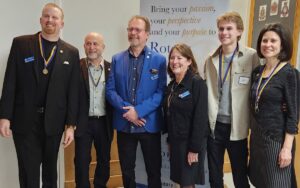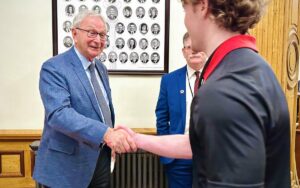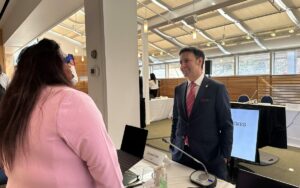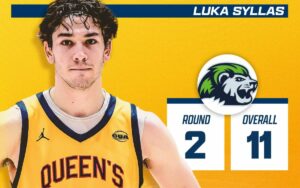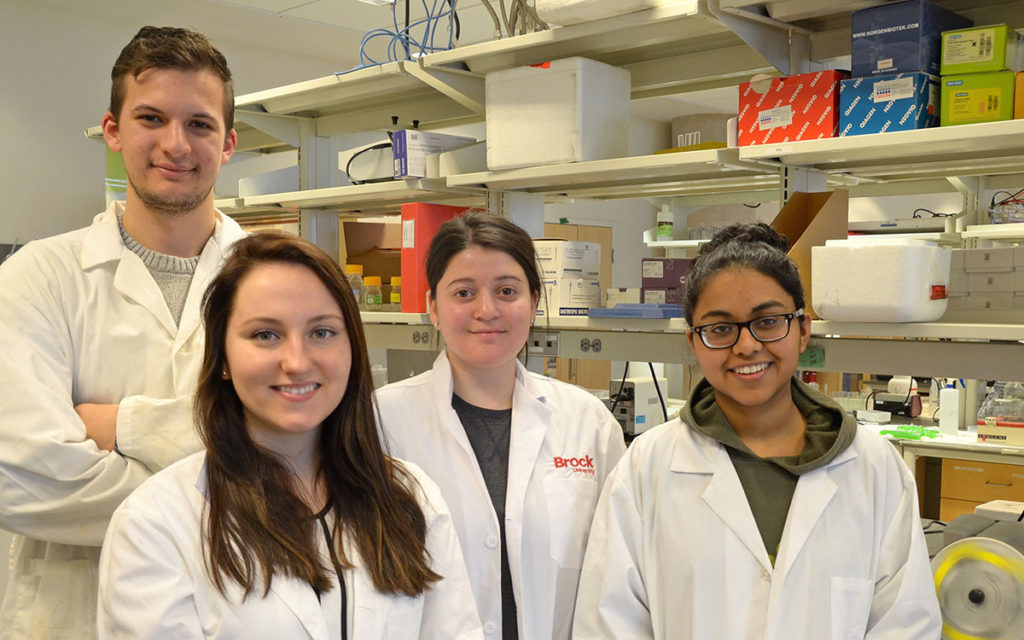
A Brock University student placed an impressive third overall in a national science research video contest, with two other Brock student videos among the contest’s top 15 finalists.
Science, Action! features student-produced, 60-second videos on research projects funded by the Natural Sciences and Engineering Research Council of Canada (NSERC), one of Brock’s major research funders.
Taylor Lidster took third place with her video, On the Fly. Two other videos – produced by Matthew Mueller and the team of Zakia Dahi and Jina Nanayakkara — were included in the top 15 of finalists from universities across Canada.
All four students are from the Department of Biological Sciences. Mueller, Dahi and Lidster are master’s students, while Nanayakkara has just completed her undergraduate degree.
Their videos explore how fruit flies help us better understand the human gut, how cells chat with one another, and how genes “jump.”
“It’s wonderful to see Brock student researchers being recognized nationally, both for the excellence of their research projects and for their ability to explain the impact and significance of their work,” says Brock Vice-President, Research Tim Kenyon.
“The remarkable extent of Brock students’ success in the Science, Action! program is a powerful indication of their calibre, and a great credit to the training and research mentorship they receive from Brock University professors,” he says.
Lidster’s On the Fly shows how the fruit fly is used to study inflammation in the gut. The researchers use genetic techniques and microscopy to see any changes in the gut environment, good or bad.
Mueller’s Cell Talk explains that the root cause of several contemporary diseases is a disruption in communication between cells, examines the language that cells use to talk to one another, and describes how this changes in diseases such as Alzheimer’s and cancer.
DNA: A Mobile Molecule, by Dahi and Nanayakkara, explores how DNA sequences that move around – called “jumping genes” – copy and paste themselves into different parts of our genomes. The research aims to understand how “jumping genes” have led to human variation and disease.
The Science, Action! contest enables students to present their NSERC-funded science research to a wide audience.
“There is so much great research that goes unnoticed on campuses, and we wanted to bring these stories to Canadians in a way that is fun and accessible,” says Christian Riel, NSERC’s Director of Communications. “Science, Action! challenges students to find new ways of explaining complex research so that anyone from kids to grandparents can understand.”
Mueller says he had to “unwrap several layers” of the first draft of his script before coming up with the final wording for his video.
“Through the process, I feel like we built up a lot of communication skills,” he says. “I’m noticing a trend: some of the best scientists I know are also the best communicators I know.”
Students entering the contest faced some big challenges. In mid-February, NSERC posted 75 video entries from students across Canada; seven of these videos were from Brock. The 25 videos with the most views by March 2 would then make it to the next round. Five Brock videos made it into the Top 25. From there, a panel of judges selected the Top 15.
“These videos give a great vision of what our research is all about,” says Dahi. “Our family and friends were asking questions, wanting to know more. It’s a great opportunity for us to tell people what we’re doing on a daily basis.”
“It’s a really good way to figure out how to boil down our research, which we usually think of as being so complicated,” says Nanayakkara.
NSERC announced the 2018 contest results on Thursday, April 26. All 15 finalists receive cash prizes worth up to $3,500.











